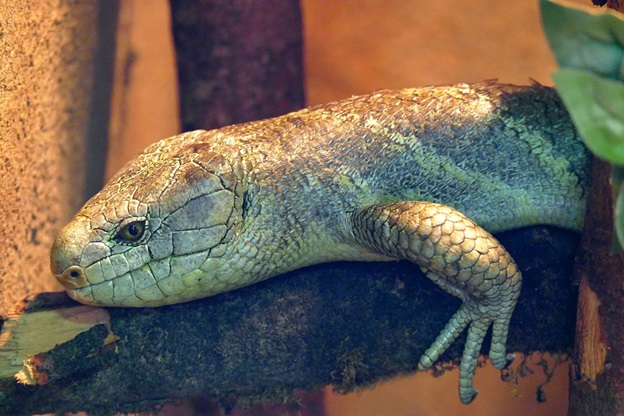Reptiles make fantastic pets. If you’re planning to make an enclosure for your reptile, choosing materials can be a bit daunting. You want to ensure you meet your reptile’s needs, which means getting the right materials.
Building the Cage
First, you’ll need the layout of the cage itself. Plywood, particleboard, and pegboard are standard options for building the frame. Melamine, laminated particleboard, is solid and easy to clean, but it’s also heavy.
Remember that you’ll need some ventilation in your enclosure. Small ventilation mesh panels or holes work for most cages. Use glue and screws to build the frame and attach the panels when constructing your cage. Once it’s put together, seal it with a non-toxic sealer. You’ll also require hinges for a door if you want side access.
Choosing a Substrate
Next, you’ll need a substrate to cover the bottom of the cage and help with odor control. Standard options for a substrate include:
- Sand (suitable for desert reptiles)
- Bark, wood, or mulch shavings (best for reptiles that spend little time on the base)
- Shredded newspaper or paper towels
- Coconut fiber or moss for high humidity and burrowing reptiles
The substrate you select depends on the reptile’s natural habitat. For instance, sand simulates dry conditions, while moss is best for reptiles that require high humidity.
Adding Heat Sources and Lights
Reptiles need external heat sources to control their body temperature. You have a few choices for heating your reptile enclosure:
- Ceramic heaters
- Heat pads
- Basking lamps
- Heat cables
It’s best to pick only one heating method since multiple heat sources could cause the enclosure to be too hot. Heating cables and pads tend to get very hot on their own, too, so be cautious with how they’re placed. For lighting, you need some UV light. These should be positioned outside the cage or otherwise protected from your reptile. Ensure you choose the correct output for your reptile’s needs.
Furnishing the Cage
The furnishings in your reptile cage should emulate its natural habitat. Branches are great for climbers, while flat rocks are suitable for ground-dwellers. They should have a couple of places to hide: one warm and one cold. Also, some reptiles will require a pool of water to climb into, while others will only require a drip bottle.
Choose the Right Materials
If you’re not sure what your reptile needs, a reptile shop can help you choose the best supplies and materials for an enclosure.


